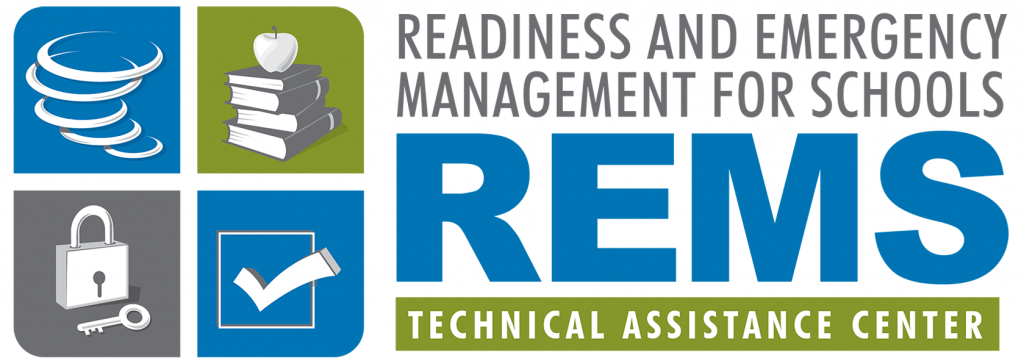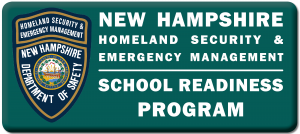
When developing emergency operations plans (EOPs), K-12 schools, schools districts, and institutions of higher education should provide for the access and functional needs of the whole school/campus community to ensure that plans are fair, inclusive, and equitable. The “whole school community” includes children; individuals with disabilities and access and functional needs; those from religiously, racially, and ethnically diverse backgrounds; and people with limited English proficiency. Ensuring that EOPs are comprehensive and equitable for all staff, students, and families means that their needs will be accounted for before, during, and after an emergency at all times (e.g., transportation to/from school, after school and extracurricular activities) and in all settings (e.g., abroad, online, athletic events, field trips, school bus). Education agencies can adopt equitable emergency management practices through key preparedness activities, including forming core planning teams that are diverse and multidisciplinary, conducting a variety of assessments at the school and district levels, and creating a positive school climate.
CORE PLANNING TEAMS
Incorporating equitable emergency management practices into EOPs begins even before the plan is developed. In order for the needs of the whole school community to be met, the core planning team itself should represent many different aspects of the community, to ensure that they all have a voice. Such members can include representatives from students, staff, and families; with disabilities; and who speak other languages, observe different religions, come from different racial backgrounds, and have any other aspect of diversity that can add to the core planning teams’ overall perspective and knowledge. Some examples of individuals and organizations to include on core planning teams with equity in mind are school district and local education agency members, school community members, local community partners, state Department of Education partners, state education agency members, state community partners, and others with a role in school emergency management (e.g., local elected officials, community-based youth organizations, disaster organizations, media). The perspectives of these individuals are crucial throughout EOP development and can inform not only annexes, training, and exercises but also the education agency’s response, recovery, protection, prevention, and mitigation efforts, to ensure their overall approach to preparedness is equitable.
FAIR AND EQUITABLE SCHOOL SAFETY ASSESSMENTS
In the context of school safety, assessments play an important role in helping to develop and inform updates to EOPs, so it’s important for them to be implemented with a focus on equity.
Behavioral Threat Assessments
Behavioral threat assessments are essential for identifying, evaluating, and reducing the risk posed by a student who may be thinking about or planning for a school-based attack. For a behavioral threat assessment to be truly effective, it must include an equitable approach as well. Part of the definition of behavioral threat assessment is focusing on what a particular student is doing and saying, and not on whether the student “looks like” those who have attacked schools in the past. An effective threat assessment is based on facts, rather than characteristics or traits. This is important to ensure that there is no bias involved for the student and to strengthen the accuracy of the threat assessment, allowing for a more effective emergency management response. To avoid making generalizations about an individual, it is advantageous to have an equitable behavioral threat assessment team who can offer different perspectives and point out potential biases other members may have, as well as have training in or an understanding of suicide prevention and intervention, mental health, trauma, and developmental disabilities. It is especially important to be knowledgeable about a student’s cultural background to be able to recognize how that may inform a student’s behavior or actions and to ensure that these potential issues are being addressed with care and consideration.
School Climate and Culture Assessments
School culture and climate assessments are crucial to the health, wellness, and academic performance of students and, therefore, must also consider equity in the process of emergency planning. The U.S. Department of Education (ED), Office of Safe and Supportive Schools’ Model of School Climat three overarching factors that make up a school climate: engagement, safety, and environment. All of these factors can be impacted by equity. Having allows students to feel safe at school, which allows them to become more socially and academically engaged. The REMS TA Center’s Webinar, Trauma-Informed Care for Schools Before, During, and After Possible Emergency Events provides more information on the topic. ED has recently released a new resource, Guiding Principles for Creating Safe, Inclusive, Supportive, and Fair School Climates, which provides guidance on and recommendations (based on specific, evidence-based practices) for creating and maintaining safe, inclusive, supportive, and fair learning environments for students and school staff. Conducting regular culture and climate assessments can lead to a more thorough understanding of the current school environment and how to best address any issues that may be revealed in the assessment. Once completed, these assessments can be used to make goals and action plans toward safer and more equitable school environments and emergency management practices.
Site and Capacity Assessments
School site assessments play a crucial role in a safe school environment and in emergency management practices. They examine the safety, security, accessibility, and emergency preparedness of the school buildings and grounds, which ensures the safety of students, administrators, teachers, staff, families, and visitors. These assessments provide critical information before an emergency occurs and should be conducted at least annually, if not more often. As with all planning teams, site assessment teams should have multidisciplinary members representing the school, school district, and surrounding community and community partners, with an emphasis on equity (especially individuals with disabilties and access and functional needs). Once the team is assembled, team members can conduct a walkthrough of the educational facilities using a checklist or the REMS TA Center’s SITE ASSESS mobile application to note the conditions of the building(s) and grounds; review building access and control measures; and assess the visibility and structural integrity of the building(s), Americans with Disabilites Act compliance (accessibility to individuals with disabilities and access and fuctional needs), and emergency vehicle access. These walkthroughs should be done at all settings and all times (e.g., normal school hours, when students are present, after dark). Additionally, the team should consider including students on walkthroughs, as they can be a valuable resource with fresh perspectives. After the assessment is completed, the team should draft a report with the data and findings, along with a prioritized list of improvements, to share with emergency planning personnel.
Capacity assessments are also essential in school safety planning because they examine the resources and services available to the planning team. These resources, such as equipment and supplies, should be inventoried, and this inventory should include an evaluation of resources specific to individuals with disabilities and access and functional needs. Examples include evacuation chairs, availability of sign language interpreters and assistive communication technology, accessible transportation, and medical supplies and equipment. A capacity assessment also includes the capabilities of students, staff, and community partners. Such findings may include people in the building with specific skills, such as first aid certification, counseling and mental health expertise, and the ability to assist individuals with disabilities and access and functional needs. These skills and knowledge and the materials available will help inform EOP development to ensure that preparations and accommodations have been made for all individuals on school grounds in the event of an emergency.
REMS TA CENTER RESOURCES
Please see below for REMS TA Center’s resources on incorporating equity in emergency management planning and assessments, including Webinars, fact sheets, and other publications.
Core Planning Teams
- Developing Comprehensive and Equitable School Safety Plans That Consider the Whole Child, Whole School, and Whole Community, Webinar
- Building Blocks to School Safety: A Toolkit for K-12 Schools and School Districts for Developing High-Quality School Emergency Operations Plans, Publication
- Institution of Higher Education Planning and Response Teams: Developing and Enhancing the Higher ed Emergency Operations Plan, Checklist
- Integrating K-12 Students With Disabilities Into School Emergency Management Planning, Fact sheet
Behavioral Threat Assessments
- Forming a School Behavioral Threat Assessment Team, Webinar
- Use of Social Media in School Behavioral Threat Assessments, Webinar
- School Behavioral Threat Assessments: An Introduction, Training by request
- Protecting America’s Schools: A U.S. Secret Service Analysis of Targeted School Violence, Publication
- Enhancing School Safety Using a Threat Assessment Model: An Operational Guide for Preventing Targeted School Violence, Publication
- Ready, Set, Go, Review: Screening for Behavioral Health Risk in Schools, Publication
- Student Threat Assessment as a Safe and Supportive Prevention Strategy, Final Technical Report, Publication
- School Safety: Research on Gathering Tips and Addressing Threats, Publication
- Threat Assessment and Reporting, Web page
- Threat Assessment, Web page
- A Quick Guide to Information Sharing During Threat Reporting & Assessment, Publication
- Essential Elements of School Threat Assessment, Web page
- Improving School Safety: Policy Trends, Assessment, and Prevention, Webinar
School Climate and Culture Assessments
- School Culture and Climate Assessments, Fact sheet
- How Positive School Climate Can Enhance School Safety, Webinar
- Trauma-Informed Care for Schools Before, During, and After Possible Emergency Events, Webinar
Site and Capacity Assessments
- Assessing Your School Site, Online course
- Conducting K-12 Site Assessments With SITE ASSESS, Specialized training package
- Conducting K-12 Site Assessments With SITE ASSESS, Virtual training by request
- Conducting K-12 Site Assessments With SITE ASSESS, Webinar
- SITE ASSESS Mobile Application, Web page
- Guide for Developing High-Quality School Emergency Operations Plans: At a Glance – Assessment Overview, Web page







